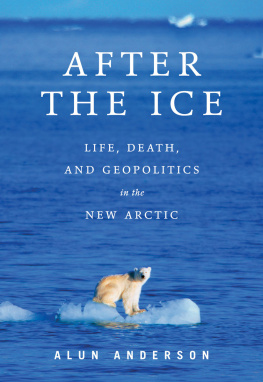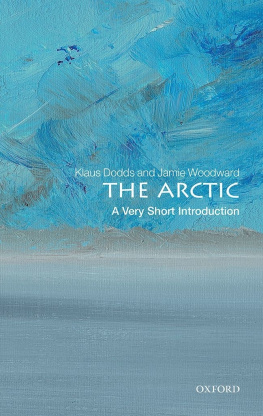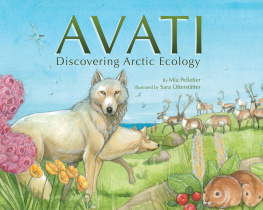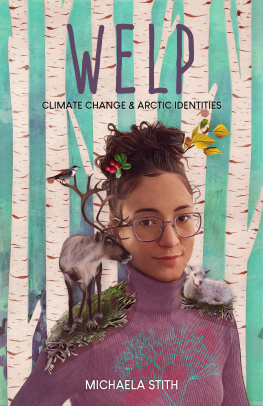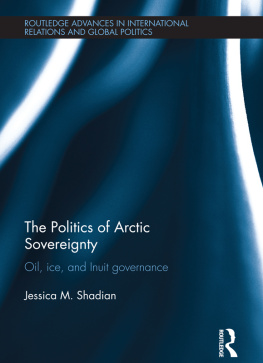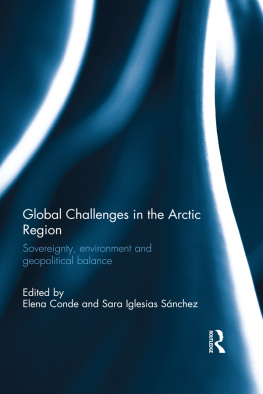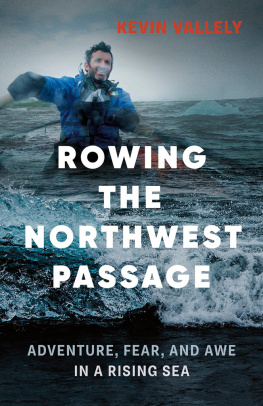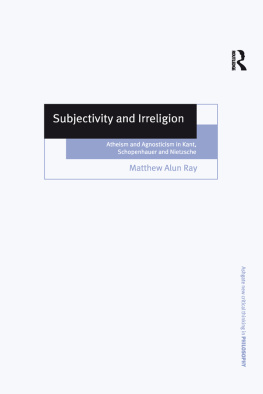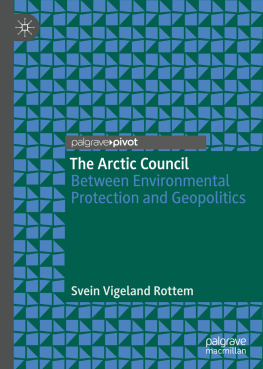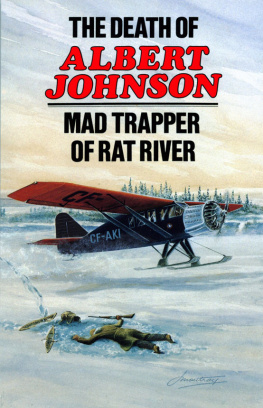T he first polar bear that I ever saw was walking steadily along a narrow strip of beach on the south coast of Devon Island. Id arrived in Canadas High Arctic only the day before, after flying due north for six hours from the August heat of Ottawa to the little gravel airstrip at Resolute, a place that was not even marked on my atlas back home in London. A chance invitation had brought me here: a journalist colleague of mine had been invited to join a small cruise ship to see the High North, but had to cancel at the last minute. I volunteered instead, knowing nothing of what lay before me.
At Resolute I had a quick course in how to climb into an inflatable Zodiac boat and then sped off across the bay, weaving among the ice floes, to a four-hundred-foot Russian ship that was about to leave for Ellesmere Island. Once beyond the bay, the ship ran into a huge field of ice. The captain called up the Canadian Coast Guard, and its bright red icebreaker, Des Groseilliers, came out to cut a path through the ice for us, and then said goodbye with a blast of its siren. We sailed on east into open blue water and sunshine with the eroded, ochre-red desert cliffs of Devon Island alongside us to the north. Only the occasional glimpse of the ice cap far inland told me that I was in the Arctic and not on a cruise up the Nile.
Jet lag kept me up far into the endless light of the Arctic night, and to cure it I went up on deck. That is where I saw my first bear, and I was thrilled to pieces. She was just a white dot to begin with, but as we drew closer I could see her well with the naked eye. For the next half hour, we cruised alongside her and I could follow the bears steady, swinging gait and watch her every move.
She wasnt exactly how I had imagined a bear would be. Her hindquarters were higher and more massive and her neck was longer and more powerful. Most striking of all was her purposefulness. She was striding along the beach, her head stretched out in front of her, going somewhere that had nothing to do with any watching human. She never gave our ship a glance. Traveling with her, I passed into the bears world. There are so many wild creatures that just flee at the first sight of humans, so many that you can only hope to see if you hide and keep silent. This bear looked as though she owned the beach.
I didnt know that this bear, which never even looked my way, was going to send my life in a new direction that would lead, after a few twists and turns, to this book. Perhaps that would never have happened if I hadnt begun talking to another passenger who had come up on deck, a wildlife biologist from Canada. Hed begun looking intently at the bear through a powerful tripod-mounted telescope and invited me to take a really close-up look. She wont make it, he said casually. Make what? Make it through the year. Ive seen her several times this season walking back and forth. Shes starving. She should be fat and plump now. Look at her underside and her hind legs; the fur is hanging loose. Its too late for her unless some very good luck comes along.
For a moment I felt angry: this was my very first bear. He explained that she was probably two years old and coming up to her first summer without her mother to protect her. She had not eaten enough in the spring and early summer when there had been plenty of young seals out on the ice. Perhaps she had not been quick enough to learn from her mother how to hunt. Perhaps she had been abandoned too early. Perhaps the ice had vanished too quickly. Shes walking the beach with a purpose, he said. Shes stretching out her neck, sniffing the air hoping to catch the scent of carrion. If shes lucky shell find a dead seal washed up, or even better a whalethere are beluga and narwhal around here. If she finds it first, that is. Shes young and if a bigger animal gets there before her, shell be driven away. If there were still ice around she might be able to swim out to it and catch a seal. But we havent seen ice since we left Resolute.
The blue sea, the beach, and the bear started to look very different. Why isnt there ice here? I asked. I was wondering if this was a part of the big Arctic melt. Like everyone else Id heard stories that the Arctic ice was shrinking and seen pictures of a forlorn bear perched on a tiny ice floe in a bright blue sea. Its not as simple as that, he replied. This bay was full of ice last year and the year before. Im not sure if the ice is really melting away because the world is growing warmer or this is just a bad year. If I wanted to know more about ice, he said, I should go to the ships bridge. They are the ones who worry about ice all voyage long. Ask them to show you some ice charts.
So I did. On the bridge there was little time to watch polar bears. The crew and the ice pilot, a local brought on board to help navigate safely through the Arctic waters, were surrounded by radar screens and weather maps. Yes, they had plenty of charts of the ice cover in the region. Far out in the Canadian High Arctic, you are not really alone. Down south in Ottawa the Canadian Ice Service captures images of the Arctic from satellites and downloads maps of the ice onto the Web for everyone to see.
One chart showed the ice concentration, going from a reassuring watery blue for ice free through deep greens and on to a bright red for 90 percent to total ice cover, and a dark gray for fast ice, that is, ice frozen up and locked to the shoreline.
Another color-coded chart showed ice age, from the mauves of fragile new ice, through the greens of first-year ice and browns of second-year ice, and on to threatening bright reds. This was the multiyear ice that had passed many times through the warmth of summer without melting away and had grown stronger, harder, and thicker. Only heavy icebreakers dare venture into the brown and red zones.
Large triangles dotted the more open waters of the ice charts: icebergs, explained the pilot. Nearer the Greenland coast, in iceberg alley, they were everywhere. But heavy sea ice had retreated far to the north, up Nares Strait. Here, off the coast of Devon Island where we were cruising along, the charts showed no color at all: ice free. There was just a patch of greens and browns at Resolute, back where we had called up the icebreaker to take us to open water.
One of the crew pulled out charts from earlier years. Two years before, in the same week, practically all the water between Baffin Island and Greenland had been filled by a huge tongue of first- and second-year ice; most of the ice-free waters off Devon Island where we were sailing now had been frozen right over. Was this the Arctic melt? Staring at the charts, the answer became less certain. They showed that the ice was not so much melting away as endlessly shiftingdisappearing from one place and appearing in another, thickening in one bay in one year and then vanishing from it the next. I wanted to know a lot more.

